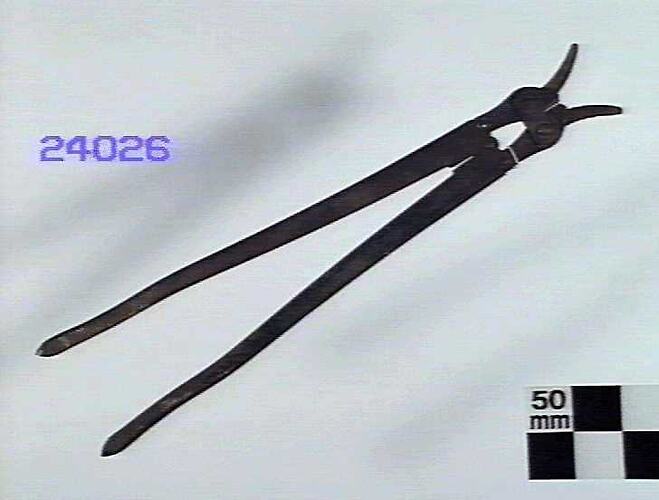Summary
Alternative Name(s): Wire Cutters, Wirecutter, Wirecutters, Wire-cutter
Cast metal wire cutter used by German troops during World War I, and 'captured' during or after the War.
Souvenirs of World War I were collected after World War I with a view to establishing an Australian war museum. In September 1917 C.W. Bean described war relics as 'sacred things' in the Commonwealth Gazette, and in 1919 went to Gallipoli as the head of the Australian Historical Mission to collect relics (as well as seeking Turkish accounts of the campaign and reporting on the condition of war graves). Bean also collected relics from other theatres of battle in World War I.
Originally part of the Australian War Museum (later the Australian War Memorial) collection when it was located at the Exhibition Buildings in Melbourne. The Australian War Museum opened in the Exhibition Building on Anzac Day 1922. Its exhibition included many war relics collected by soldiers. It was enthusiastically lauded by the press and attracted large crowds. The exhibition closed in 1925 and was moved to Sydney, where it remained for 10 years until the permanent home of the Australian War Memorial was built in Canberra.
Physical Description
Cast metal wire cutter with long straight handles, slightly tapered to ends. Mouth conprises two prongs of metal, flared outwards.
More Information
-
Collecting Areas
-
Acquisition Information
Donation from Australian War Memorial (AWM), Victoria, Victoria: State War Trophy Committee, 1955
-
Place & Date Used
-
Classification
-
Category
-
Discipline
-
Type of item
-
Object Measurements
65 cm (Length), 11 cm (Width), 2 cm (Height)
-
References
Information on C.W. Bean from Australian War Memorial web site [Link 1] accessed 23/4/2009.
-
Keywords
Anzac Day, Commemorations, Militaria: German, Wars & Conflicts, World War I, 1914-1918
